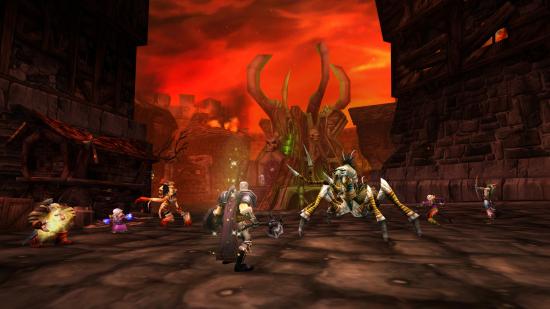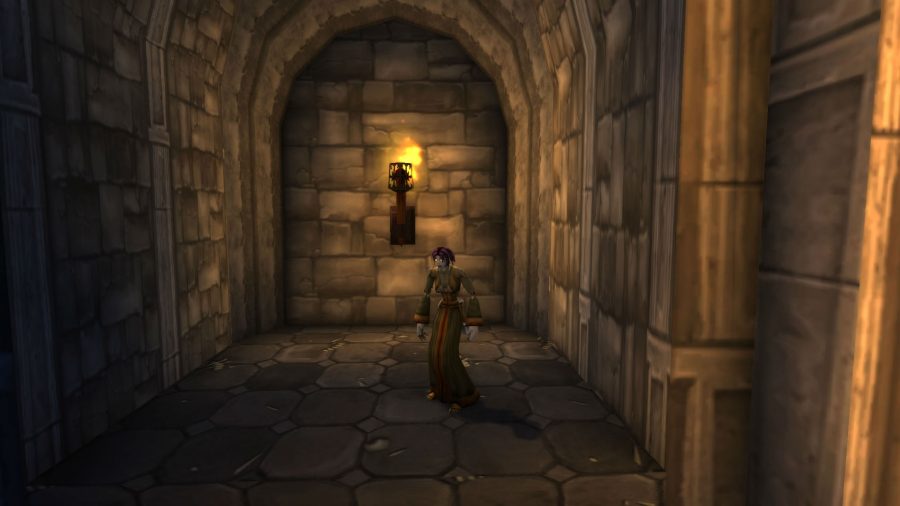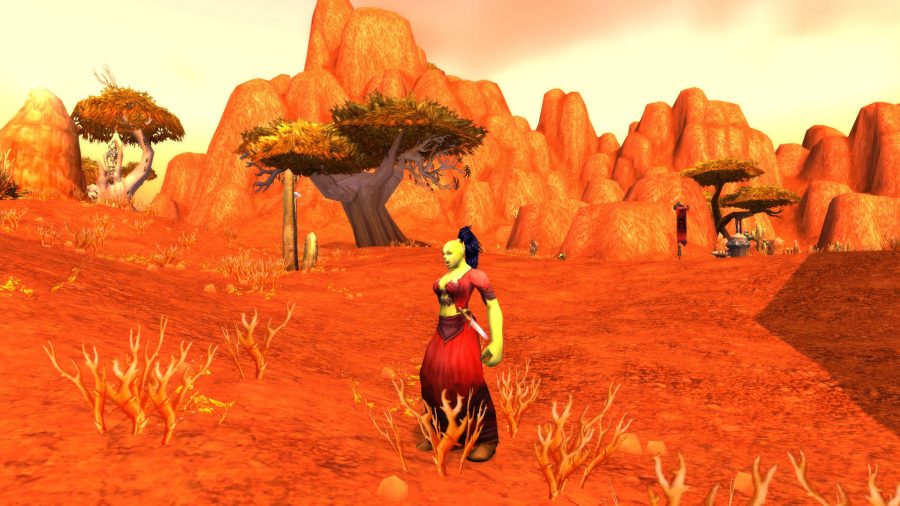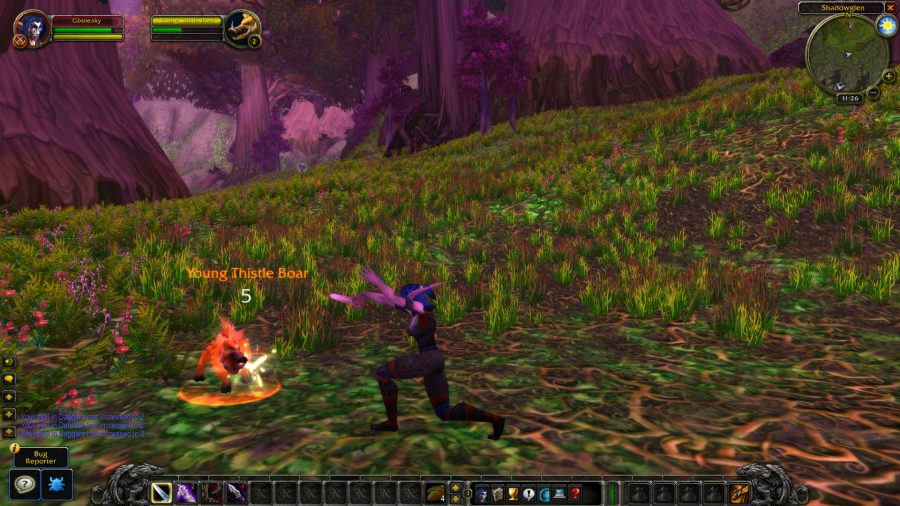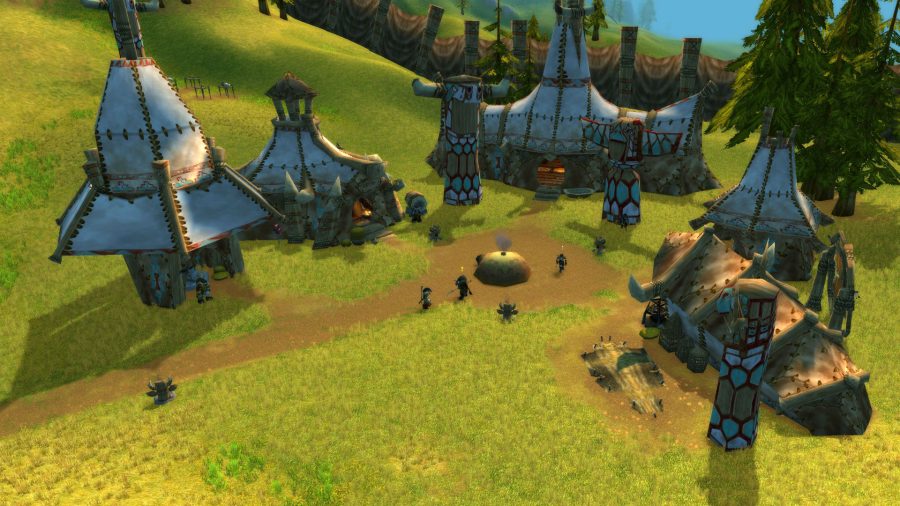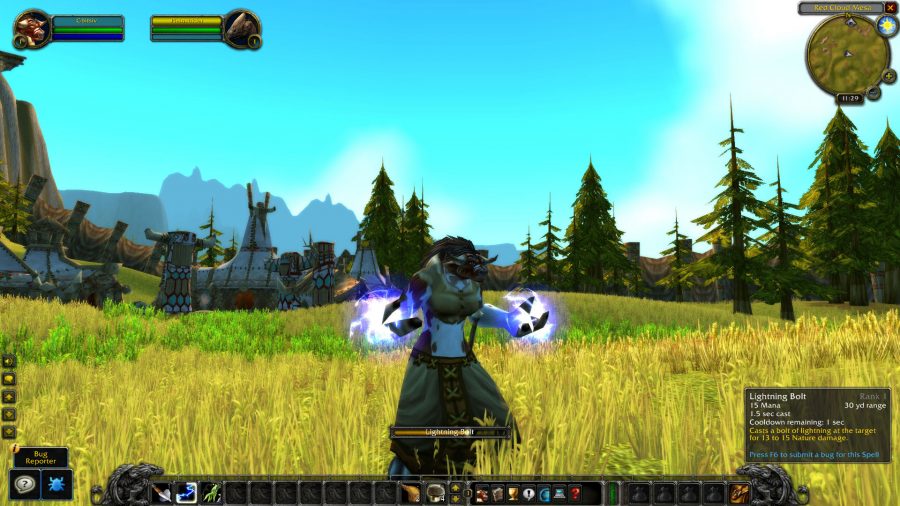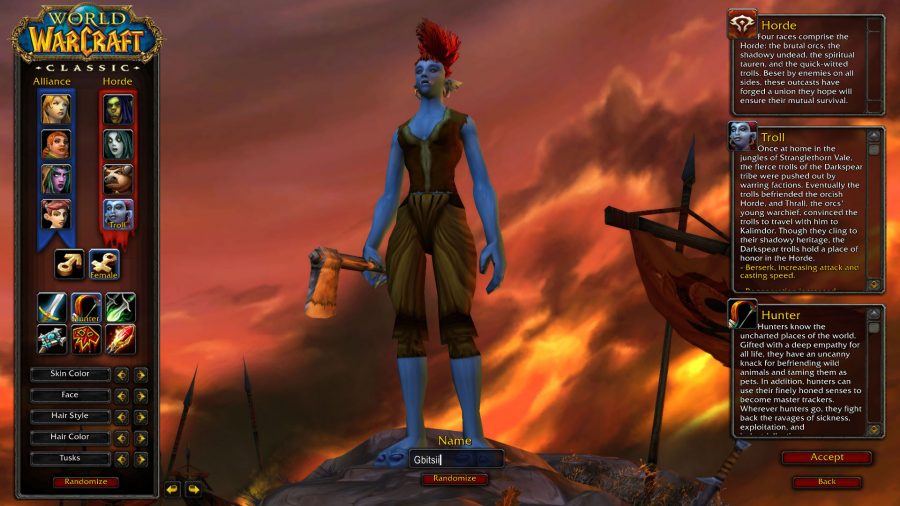Embarking upon a new adventure in World of Warcraft Classic is an exciting prospect, but the choices you make in character creation will stick with you for the hours of exploration to come. When it comes to choosing your class, there’s a wealth of wisdom available to you from the experiences of veteran players.
Trying to decide which WoW Classic class to play? Classic WoW Leveling from 1-60 takes a considerable amount of time, and there are no ‘trial characters’ in vanilla, so choosing the right class up front is more important than it is on Live. Talents are expensive to swap and gold is hard to come by, so you won’t be changing your Classic WoW class on a whim. Gear frequently does not swap well between specs either, so players who want to play more than one specialization may want to create a second character and level it up to do so.
You’ll have eight classes to choose from, depending on your faction: warriors, priests, mages, rogues, warlocks, shamans for Horde, paladins for Alliance, hunters, and druids. We cover them all below. Note that while we refer to specializations in this guide, they aren’t an up-front selection like they are in contemporary Warcraft. Instead, players choose from packed talent trees, spending a few points here and there in the three specializations available to them. Truly hybrid builds are rare, but do exist.
The best vanilla WoW classes are:
Top pick: Protection Warrior
Warriors are a staple choice for Classic, not because of their damage, but because they are the only realistic choice for tanking in vanilla: monks and demon hunters weren’t in the game initially, paladins are primarily for healing and buffing other players (see below), and druid bears are a joke, comparatively. Warriors are more mobile, better at keeping threat than any other tank class (there’s a reason why ‘wait for three Sunders’ is a tanking meme even today), and fairly beefy when it comes to taking damage. As a bonus, if you’re interested in the full Classic experience, they’re one of the few classes able to create and wield Thunderfury, Blessed Blade of the Windseeker, which is a fun questing experience if you are lucky enough to get the starter drops.
As with all tanking classes in Classic, gameplay is very different than it is on Live. For example, Active mitigation – buttons that you press to reduce damage that comes in, or recover from damage taken – is less emphasized, and in some cases is reduced to just cooldowns that you predictably hit during times of high incoming damage. Instead, keeping threat on the monsters so your damage dealers can unload is a priority, along with whatever tank-swap or other mechanics exist in the fight.
In PvP, warriors do middling damage as either Arms or Fury, and are adept at carrying the flag in Warsong Gulch as Protection.
Top pick: Holy Priest
The second in the traditional warrior-mage-priest RPG archetype (sorry rogues), priests are the go-to healers in WoW Classic. They have the most tools to play with, and while druids and paladins offer some refreshing variations on healing gameplay, priests are the powerhouses of the raid and equally viable in PvP.
Holy priests are the strongest healers in the vanilla World of Warcraft for raids, and are nearly unstoppable when paired up with a Protection warrior. In arenas, Disc and Shadow priests are legitimately viable, though they were seen less often in raids back in 2004.
For raids, priests also offer the powerful stamina-boosting Fortitude buff. Dwarven priests give Alliance players the incredibly powerful Fear Ward, which protects a player from receiving the Fear effect. As several major bosses use Fear, including Magmadar in Molten Core, a rotation of Dwarven priests is useful to have.
Holy priest healing styles are a bit different in Classic than in contemporary WoW. Holy Nova is a short-range AoE heal that means you’ll be clumping up with melee or ranged players. There is no Halo, Binding Heal, or pretty much anything that starts ‘Halo’, so instead you’ll be casting a pile of Renews and Greater Heals at various ranks. Your top-of-tree talent is Lightwell, an interactive font of healing that no other players will ever click.

Top pick for single target spell damage: Fire (or situationally Frost) Mage
For single-target damage, mages truly are the ‘glass cannons‘ of Classic Warcraft classes. They can quickly pile on the damage from afar, though they are highly susceptible to death: from fire on the ground, PvP opponents, or even a single mob.
Outstripped by their warlock brethren in terms of AoE damage, mages nevertheless are the consummate casters, able to pour on the DPS; crowd control opponents by turning them into sheep or freezing them in place with Frost Nova; and provide utility to a raid by summoning food or buffing other players’ intellect.
Classic rogues and mages are designed to be counters to each other in PvP, and many rogue-versus-mage contests both in PvE damage and in PvP contests come down to player skill, making both viable in most situations. For survivability, both classes are designed to escape rather than tank incoming damage.
Typically, mages pursue mostly Fire talents in PvE and mostly Frost talents for getting away in PvP, with the exception of the fire-based Molten Core and Blackwing Lair raid instances, where having Frost spells is a huge advantage. Some of these monsters are immune to fire damage altogether.
Contemporary mage players will find that while they miss some of their current utility spells, the gameplay isn’t that much different, as many iconic mage abilities (fireball, pyroblast, frostbolt, arcane missiles) have survived intact for the past 15 years since vanilla Warcraft. Frost mages will miss Ice Lance, but will revel in the power of the spec in fire-boss raids.
Top pick for AoE spell damage: Destruction or Affliction Warlock
Warlocks bring some of the best AoE damage of all the Classic WoW classes, with the ability to annihilate entire groups of creatures – the tradeoff is somewhat less single-target damage than mages and rogues. On the plus side, their ability to apply stack multiple damage-over-time (DOT) spells make them ideal for fights that require a great deal of movement, and makes Affliction the top warlock spec in PvP.
On the down side, the limited number of debuffs on a single creature in Classic WoW means that they may not be able to use all those DOT spells in favour of debuffs cast by other classes, which often makes the difference for whether Affliction or Destruction specs do more damage. Demonology typically lags behind the other two.
In addition: Check out the best WoW Classic addons
For utility, the warlock offers the group healthstones (which do not share a cooldown with potions) and soulstones, which can be used on a player in advance to allow them to resurrect if they die. This is helpful in groups as it allows a tank or healer to fight on, but also as it grants a degree of wipe protection so that the whole group does not have to run back if everyone dies. Warlocks also have the ability to summon group members with the help of two other players. These abilities and others use soul shards, which must be farmed by tediously, individually killing creatures before raids and group outings, and which then take up the majority of the warlock’s bags or fill a special soul pouch. Look, we’re saying the warlock is a powerful class, not a fun one.
Warlocks can banish demons and elementals, which makes them useful for crowd control – including druid ‘tree’ healers in PvP, who are classified as an elemental in tree form. Also in PvP, warlocks make heavy use of fear and Drain Life, allowing them to scare off an opponent and then restore their own health by draining their enemy.
Top pick for melee DPS, PvP and general sneakiness: Subtlety Rogue
Subtlety Rogues have always been superb for PvP, and it shows in their toolkit: Classic WoW rogue classes are loaded with options for crowd control, surprise damage, and avoidance. In PvE they aren’t terrible, but are less dominant, ceding more slots to ranged damage-dealers such as mages and warlocks.
Soloing as a rogue can be frustrating, as it’s more difficult to escape the loving attentions of an angry monster while still dishing out damage than it is in group play or PvP, and this WoW Classic class is fairly fragile. That frustration wanes as your gear gets better and that super-powerful opening sequence becomes enough to nearly kill your enemy, especially when combined with the multitude of Classic mobs that run when they get to low health. Rogues excel at slowing and then killing those opponents, especially when equipped with the proper poisons on each dual-wielded weapon.
For utility, rogues can open lockboxes, assuming they trained up their lockpicking skills, and they can stealth through monsters to click on items or rejoin their groups while in dungeons.
Best for buffs, battle rez and beauty: Resto Druid
In WoW Classic, druids have one viable role: healing. We can remember extensive arguments between one druid who wanted to try out raiding as feral and his top guild raid leaders, who all thought he was a little insane – so even if you can make it work, others won’t believe you. If you would prefer to do damage and plan to play more than just casually, you’ll want to choose a direct damage class.
Get a job: Here are the best Classic WoW Professions
As with all hybrid classes, druids are subject to the ‘hybrid tax,’ which reduces their maximum DPS by about 15% compared to pure-damage classes. Realistically, that combined with the half-finished feel of their tanking and DPS specs means that no one ever seriously plays a druid for either role, instead focusing on a more noble pursuit: being a tree.
In Classic, that’s a literal choice, as healing generally puts you into tree form (available on Live only as a glyph). Druid heals haven’t changed all that much over the years, with the heal over time Rejuvenation and Regrowth spells still dominant, while Tranquility reigns supreme for AOE heals.
Druids bring utility to groups in the form of the powerful Mark of the Wild stats-boosting buff (cast one player at a time, using reagents), battle resurrection (using reagents), the Faerie Fire armor-reducing debuff for opponents, and the Thorns buff, which adds to tank threat by causing them to reflect a bit of damage.
If you’re planning on playing WoW Classic more casually, druids are a fun choice; the ability to shift between animal forms and their iconic races (Night Elves for Alliance, Tauren for Horde) make them a hoot for looking at on screen or using for roleplay.
Best for memes, buffs, and one-trick builds: Paladin/Shaman
These two classes are lumped together not because they are in any way similar, but because each is only available to one faction in Classic.
Shamans are exclusively for the Horde, and their ultra powerful Bloodlust buff makes it a requirement to bring at least one to raids. Their Tremor Totems are the low-rent, not-as-guaranteed equivalent of the Dwarven priest Fear Ward for bosses that cast fear.
In PvP, Enhancement shamans use Windfury buffs (unleashing multiple swings at once with their two-handed weapon), which in patch 1.12, the snapshot Classic uses, can still proc from its own swings, leading to sometimes-ridiculous chains of huge hits against an enemy. In raids, Elemental shamans bring average damage, and typically receive their invitations on the basis of their overall utility.
Paladins are exclusively Alliance in WoW Classic. While Protection paladins do exist for tanking, they’re less popular than the iconic warrior class. Instead, most paladins opt for a healing specialization in raid and a retribution specialization in PvP. In raids, they are valued for their single-target buffs and their ability to bubble, or drop all monster aggression and stop all damage.
Realm for one more: WoW Classic servers list
Paladin blessings include the popular Wisdom for mana restoration; their Cleanse handles one disease, one magic, and one poison debuff all at once; and they make excellent out-of-combat resurrectors in raid by staying at a safe distance and rezzing dead players throughout an encounter, making them the ultimate battle rezzer.
Closer to the action, paladin’s provide auras, such as Concentration Aura, which prevents spell pushback on damage to the entire raid.
Best for soloing, pulling raid mobs (on purpose), and running out of bag space: Marksmanship/Hybrid Hunter
Hunters can equip nearly every weapon in the game in both Classic WoW and Live, and they use more of those weapons in Classic than they do today. In addition to a ranged weapon, hunters wield two melee weapons that are typically used just for their stats (or for melee combat if the hunter gets too close to a monster). Back in the day, hunters would roll to win axes, swords, and daggers against damage players from other melee classes who used them, causing some tension in groups and leading to the meme still in effect today that every weapon is a ‘hunter weapon’.
In raids, hunters do reasonable damage overall and are useful for tapping monsters from far away and running them to the main tank/healing/dps group for fighting in the appropriate position.
Hunters use ammunition, which has its own stats, and either takes up space in player bags or requires the use of a quiver, a larger specific bag made just for ammunition and nothing else. In either case, hunters who raid find they have to stuff their inventory nearly to bursting with arrows or bullets and will still run out. Swapping from a bow to a gun or back again can also render some ammo useless.
While hunter pets are not as good at tanking or holding threat from their masters in Classic as they are today, they still make soloing creatures pleasant (if not as overpowered as it is in Live, where a well-geared hunter can easily solo elites.)
